Types of Venomous Snakes
Types of Venomous Snakes
Rattlesnakes | Copperheads | Cottonmouths/Water Moccasins | Coral Snakes
Rattlesnakes
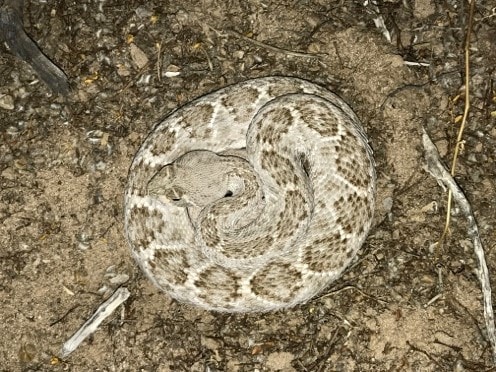
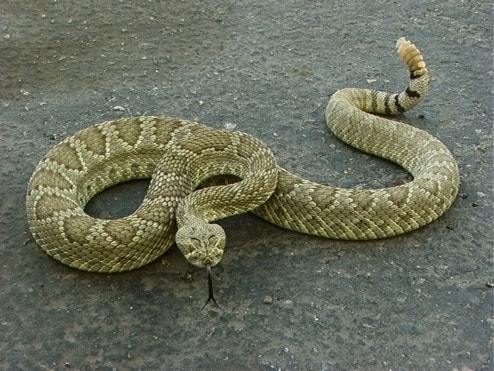
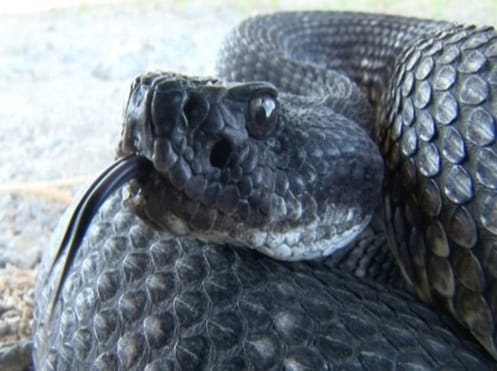
Photos courtesy of Sean P. Bush
Rattlesnakes are the largest venomous snakes in the United States, and many species live in U.S. habitats. Whether coiled or stretched out, they can quickly and accurately strike one-third or more of their body length from any position.
Rattlesnakes may use their rattles as a warning when they feel threatened, although they do not always rattle before biting. They may be found sunning themselves near logs, boulders, or open areas.
Rattlesnakes live in many habitats where people work, including in the mountains, prairies, deserts, and beaches. Antivenom is recommended for the treatment of signs of progressive envenomation (e.g., worsening of local tissue injury, systemic symptoms).
U.S. Geographic Region: Across the United States.
Copperheads
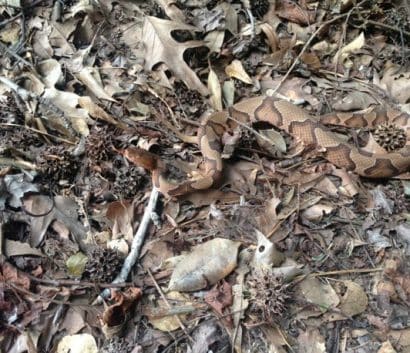
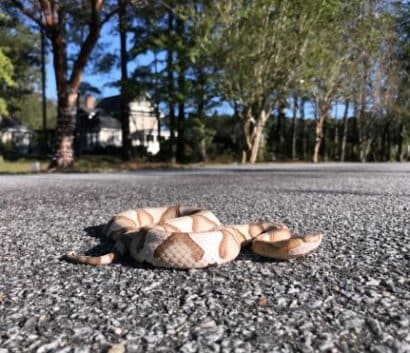
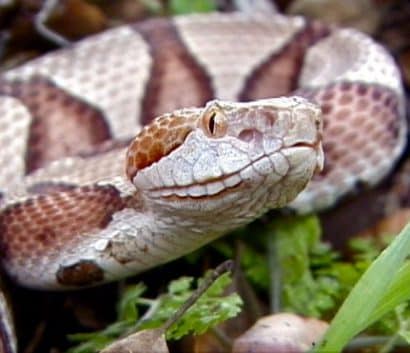
Photos courtesy of Sean P. Bush
Copperheads vary in color from reddish to golden tan. The colored bands on their bodies are typically hourglass-shaped. They have a deep facial pit between each eye and their nostril.
Copperheads are often found in forests, rocky areas, swamps, or near sources of water like rivers. Most adults are about 18–36 inches long. They are not usually aggressive, but will often freeze when frightened and will strike in defense if threatened, contacted or interacted with.
Workers are more likely to be bitten when they unknowingly step on or near a copperhead. Giving antivenom to a snake bite patient as soon as possible helps limbs to recover faster and it lessens the chance that a limb will be disabled after copperhead snake envenomation.
U.S. Geographic Region: Eastern states, extending as far west as Texas.
Cottonmouths/Water Moccasins
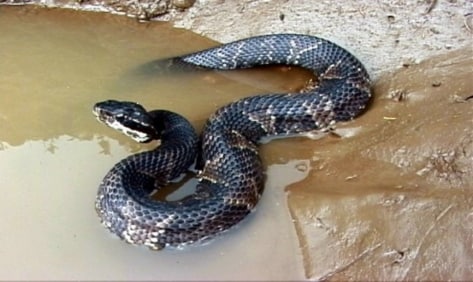
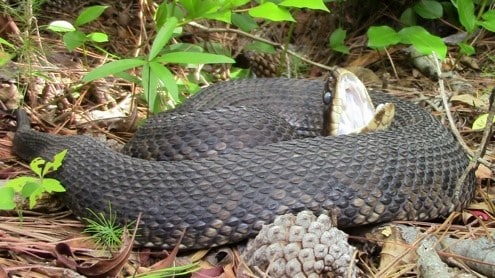
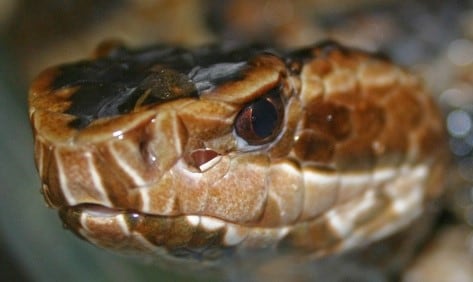
Photos courtesy of Sean P. Bush and Frederick S. Boyce
Adult cottonmouth snakes average 50–55 inches long. The adult snake’s skin is dark tan, brown, or nearly black, with vague black or dark brown cross-bands. Juveniles have a bold cross-banded pattern of brown or orange with a yellow tail. Cottonmouths are often found in or around water.
U.S. Geographic Region: Wetland areas, rivers, lakes, etc., in the southeastern states.
Coral Snakes
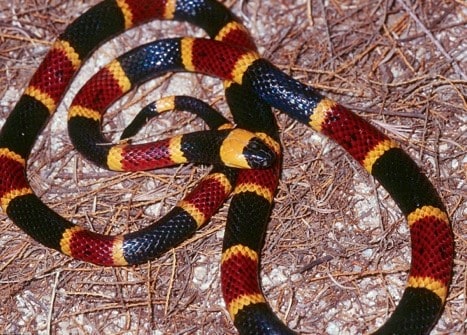
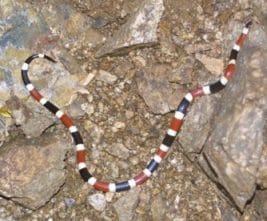
Photos courtesy of Mike Cardwell and Elda Sánchez. Other venomous snakes display warning coloration.
These snakes are sometimes confused with nonvenomous king snakes, which have similar colored bands, but arranged differently. Coral snakes tend to hide in leaf piles or burrow into the ground.
U.S. Geographic Region: Wooded, sandy, or marshy areas of the Southern United States.
